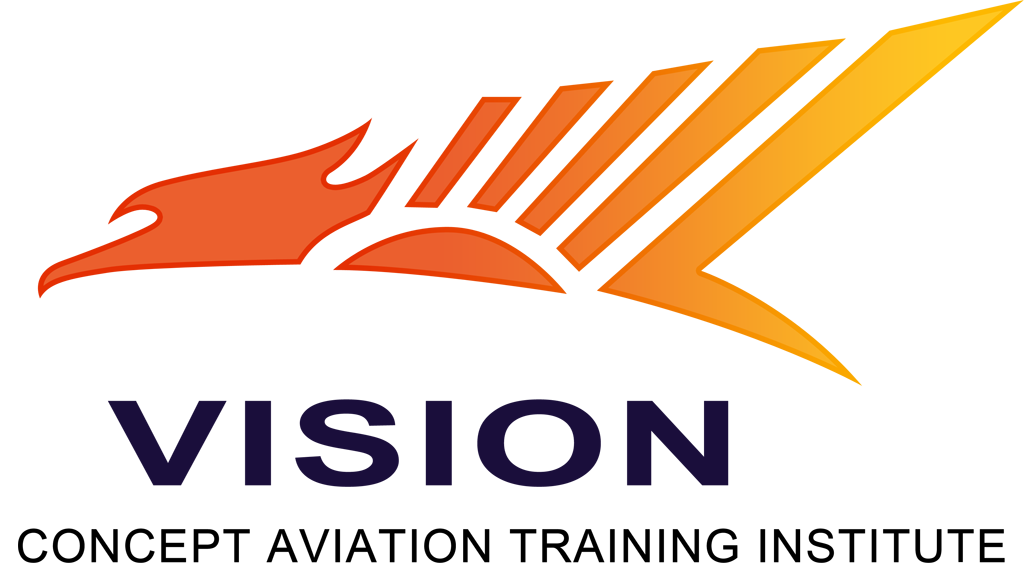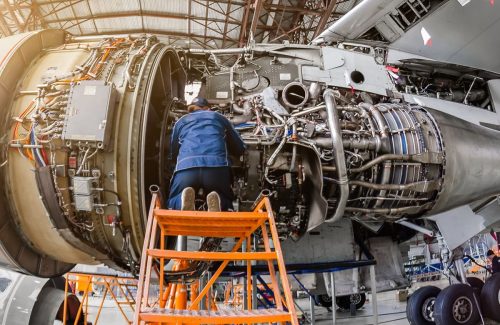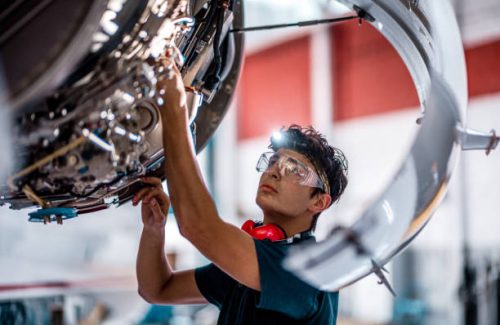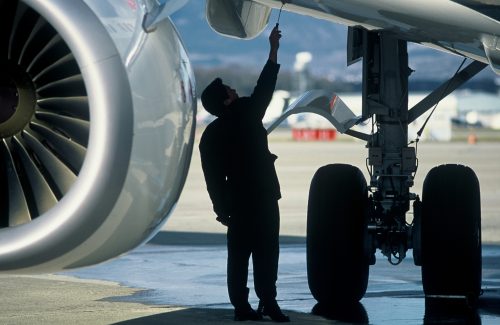Some commercial aircraft have spent more than 45-years in active service. But to assure passenger safety, airlines across the globe are required to complete a constant and effective inspection and maintenance program for its fleets.
The maintenance of each jet depends on the jurisdiction, particularly the location in which the aircraft is registered. Authorities include the European Aviation Safety Agency (EASA), the Federal Aviation Authority (FAA) in the United States, and the Transport Canada Civil Aviation Directorate (TCCA).
While cooperating with local Civil Aviation Authorities (CAAs) and aircraft manufacturers, air carriers must ensure to follow established standards for the repair and periodic overhauls of its jets. Airlines are also required to implement aircraft maintenance and inspection programs, which are carried out by certified specialists qualified to issue airworthiness certificates.
How has the aircraft maintenance program developed?
Before the mid-1950s, when high-speed commercial air travel began, aircraft maintenance tasks were being developed by flight crew and mechanics. At the time, the aircraft’s needs for maintenance were based on individual experience rather than a deep analysis of the plane.
However, the introduction of large commercial jetliners, such as narrow-bodies Boeing 707 and Douglas DC-8 in 1954, caused a necessary change to this procedure and manufacturers became aware of the importance of aircraft maintenance regulations, particularly when it came to ensuring passenger safety.
Soon, both Boeing and the Douglas Aircraft Company established time limitations and entire jetliners were periodically disassembled, overhauled and reassembled to maintain the highest level of safety.
The primary aircraft maintenance process was referred to as Hard-Time (HT), which means that all components of jets had to be taken out of service when they reached a specified age and had completed a specific number of operating flight hours, flight cycles or calendar time.
The detached segments were taken to repair centers before reinstallation. Performed usage metrics were then reset to zero once the task was completed.
Later, in 1960, the FAA investigated the capabilities of preventive aircraft maintenance and discovered that a scheduled overhaul had little effect on the reliability of aircraft components. Instead, the FAA determined that air carriers should periodically inspect particular parts of the plane and replace them when necessary and before a failure during normal operations could occur.
Currently, aircraft maintenance programs include mandatory tasks to restore or preserve jet systems, components and structures and ensure airworthiness. This regular maintenance is required for operational reasons, assuring that jets are conserved in a serviceable and reliable condition. Not only does this mean that the aircraft will continue to generate revenue, but it will also retain its current and future value by minimizing physical deterioration.
The evolution of A and B checks
Depending on aircraft type, a specific amount of flight hours (FH), or flight cycles completed, airlines initially used to divide maintenance processes into separate parts. These are more commonly known as A, B, C, and D checks.
A and B checks were lighter inspections, also known as Line maintenance. While C and D categories were considered heavier maintenance tasks and referred to as Base or Heavy maintenance. Most Line maintenance tasks are carried out in accordance with the manufacturer manual’s necessity to return to an overhaul base. Other Heavy maintenance tasks cannot be performed routinely as part of day-to-day operations and require the aircraft to be temporarily removed from service.
But as time passed, aircraft manufacturers and air carriers have altered the differentiation of maintenance tasks.
Typically, an aircraft check, which is a part of Line maintenance, is performed every 400 to 600 flight hours or between 200 and 300 cycles, where a takeoff and landing is counted as a single cycle. These checks commonly consist of a precise visual examination of the aircraft airframe, powerplant and avionics to evaluate its technical condition.
A check is performed overnight while the plane stays at an airport gate and requires up to 60 man-hours. Engineers and technicians cover detailed inspection of the aircraft wheel, brakes and emergency equipment, including the inflatable slides.
A further category of Line maintenance tasks, which used to be referred to as a B check, also consists of a selected operational check of the aircraft fluid levels, such as oil and hydraulics alongside an open inspection of the panels and cowlings. Planes undergo these B checks approximately every six to eight months and require approximately 120 to 150 man-hours. Depending on the aircraft type, these checks are usually completed within three days at an airport hangar.
Manufacturers Boeing and Airbus merged the B check task list to form an A check. They also renamed the processes, marking them as A-1 through to A-10. While A check tasks are similar, the time an inspection must be performed depends on the manufacturer’s recommendation. For example, according to the Aircraft Maintenance Program for a Boeing 737 classic, a time interval for A checks could reach 250 flight hours. Meanwhile, an Airbus A320 Family jet must undergo the same inspection at around 750 flight hours.
C checks and grounded jets
To complete Heavy maintenance tasks, which include C and D checks, air carriers must remove planes due for inspection from commercial services for approximately three weeks. Until all tasks are completed, the aircraft is not permitted to leave the maintenance site.
The C check, which is performed approximately every 20 to 24 months or after a specific amount of flight hours as defined by the manufacturer, requires more space in comparison to A or B checks. Therefore, the inspection is carried out while the jet is parked in a hangar at a maintenance base.
During C checks, technicians perform task lists, which include A and B checks alongside examining the structures of load-bearing components on the fuselage and wings. Additional tasks include complete in-depth lubrication of jet fittings and cables. To ensure that all flight controls are particularly calibrated, major internal mechanisms are tested. An aircraft also undergoes a corrosion prevention program.
Normally, it would take up to 6,000 man-hours to complete such a check, but the exact schedule tasks vary by aircraft category and type. For example, according to the Airbus A320 Family Maintenance Program, checks may be performed every 36 months, or 12000 flight hours, or 8000 flight cycles, depending on which term comes first. In comparison, the determined C check time interval for Boeing 737 classic jets is 4,000 flight hours. This can also reach 7,500 flight hours.
Two months to build a brand-new jet
The most demanding and expensive aircraft maintenance inspection is a D check, which is also known as a Heavy Maintenance Visit (HMV). It occurs every six to 10 years, or 20,000 flight hours, and involves a comprehensive inspection and repair of the entire jet. Here, technicians and engineers dismantle and rebuild the entire plane during an investigation.
In some cases, even the paint is stripped for further inspection on the fuselage metal skin to ensure that the jet has not been affected by corrosion. Depending on the jet type and the number of technicians involved, the inquiry can total 50,000 man-hours and last two months until completed.
During these checks, aircraft cabin interiors are also removed, including seats, galleys, lavatories and overhead bins, so that engineers are able to inspect the metal of jet skin from the inside and the outside. Meanwhile, all the aircraft systems are taken apart, checked and repaired as needed, before being reinstalled. The same action is applicable for the landing gear and engines, which are also removed and overhauled.
Since D checks require a suitable maintenance base and tremendous effort, they can enter the million-dollar range, depending on man-hours and hangar slot prices in specific regions.
For this reason, air carriers have to plan these maintenance visits years in advance. In exchange, companies are left with an almost brand-new jet once the D check is completed.






